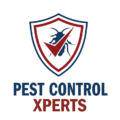Entry-Point Checks, Sealing Tips, and Why Infestations Can Quickly Spiral By Pest Control Xperts
Hudson’s charming First & Main shopping district, scenic Hudson Springs Park, and proximity to nearby communities like Aurora, Streetsboro, and Mantua create an appealing blend of suburban life and natural beauty. Unfortunately, these same factors, ample green spaces, mild-to-cold seasonal shifts, and accessible water sources can lure rats and mice seeking shelter. Below, we detail how rodents commonly enter homes in Hudson, offer sealing strategies to prevent infestations, and explain how a small rodent problem can balloon if left unchecked.
1. Why Rodents Thrive in Hudson, Aurora, Streetsboro, and Mantua
- Climate and Seasonal Shifts
- While Ohio winters can be cold, rats and mice often seek warmth indoors.
- Milder spring and summer seasons bring outdoor nourishment, helping rodents reproduce more quickly if not controlled.
- Green Spaces and Waterways
- Places like Hudson Springs Park, the Tinkers Creek State Park near Streetsboro, or the Cuyahoga River corridor around Aurora and Mantua supply moisture and cover rodents’ desires.
- Unsealed trash containers or scattered food scraps in suburban neighborhoods provide convenient feasting opportunities.
- Residential and Commercial Development
- As Hudson and its neighboring towns expand, buildings may have gaps or vulnerabilities if not sealed properly.
- Extra retail and dining spots produce more waste, further enticing rats and mice looking for easy meals.
2. Entry-Point Checks: How Rats and Mice Get Indoors
Rodents only need a gap the width of a dime to squeeze through. Conducting regular inspections of your home’s exterior helps detect these potential entryways before a minor problem becomes a major infestation.
- Foundations and Exterior Walls
- Search for cracks, holes, or separated siding near the base of your house.
- Pay extra attention to where utility lines or pipes enter; these spots often go unnoticed.
- Doors and Windows
- Repair worn door sweeps or weather stripping that leave visible gaps at thresholds.
- Ensure window screens fit tightly, with no rips or loose edges for rodents to slip through.
- Roofs, Soffits, and Attics
- Missing shingles, warped soffits, or vent openings can allow climbing rodents access.
- Droppings, chew marks, or shredded insulation in attic corners suggest an active nest.
- Garages and Storage Areas
- A small opening beneath a garage door frequently goes unnoticed by homeowners.
- Storing items in cardboard boxes provides rats and mice with hidden nesting spots if left unchecked.
3. Sealing Tips to Keep Rodents Out
After identifying openings, sealing them thoroughly is key to preventing rats and mice from taking up residence in your home.
- Robust Materials
- Fill small holes using steel wool or wire mesh, then seal over top with caulk or foam.
- Larger gaps can be covered with hardware cloth or metal flashing to withstand gnawing.
- Door Sweep Upgrades
- Even minimal gaps under exterior doors can let rodents sneak inside.
- Check garage doors for small openings, ensuring thresholds meet the ground solidly.
- Trim Vegetation
- Overhanging tree limbs, shrubs, or vines that touch walls or roofs become “bridges” for rodents.
- Remove leaf piles or yard debris near foundations to cut down on nesting sites.
- Secure Trash and Food Sources
- Use bins with tight-fitting lids, storing them away from main entry doors when possible.
- Avoid leaving pet food outdoors overnight, an alluring option for scavengers.
4. Why Rodent Infestations Can Quickly Spiral
- High Reproduction Rates
- Rats and mice can produce multiple litters annually, turning a minor sighting into a major colony fast.
- Delaying intervention often lets populations increase before detection.
- Continuous Gnawing
- Rodents chew on wires, insulation, and wood, creating structural or electrical hazards.
- Every new hole invites future pests or expands existing access routes.
- Health Concerns
- Droppings, nest materials, and rat or mouse urine can contaminate surfaces, risking indoor air quality.
- Fleas or mites carried by rodents might also infest your home, complicating the problem.
- Hidden Nesting Areas
- Wall voids, crawl spaces, or attics let rats and mice breed undetected.
- Most homeowners discover them only after an infestation is well-established.
5. Pest Control Xperts in Hudson
Pest Control Xperts focuses on pinpointing often-overlooked vulnerabilities around homes in Hudson, Aurora, Streetsboro, and Mantua. Through careful inspections, robust sealing solutions, and prevention-focused advice, we help keep minor rodent problems from growing into major infestations.
Routine Prevention Advice
- Monthly Exterior Inspections: Check foundational walls, doors, and roof edges for new gaps or gnaw marks.
- Clutter Control: Store items in sealed plastic bins instead of open cardboard boxes in garages or sheds.
- Prompt Repairs: Address leaks, worn screens, or missing roof shingles soon after spotting them.
Conclusion
Whether you’re near the picturesque lakes of Hudson, in a residential neighborhood close to Aurora, or out in the countryside of Mantua, Ohio’s changing climate and plentiful resources can entice rats and mice to set up shop. By sealing entry points, trimming vegetation, and reacting swiftly when early rodent signs emerge, homeowners can keep small problems from escalating into major infestations. Turn to Pest Control Xperts for the targeted know-how and guidance necessary to maintain a rodent-free environment across Summit and Portage counties.

